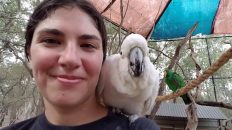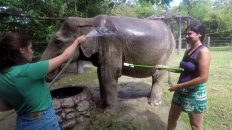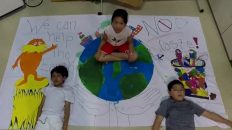My first stop on this 14 country educational excursion is China! I am learning all about the culture, and I am observing how they are treating the planet. I flew into Beijing with my friend Kat, where we met with colleagues that we will be working with at a school called DT Elite in Wenzhou. For 3 days we went on tourist excursions in and around Beijing, and then we flew to Wenzhou for teacher training.
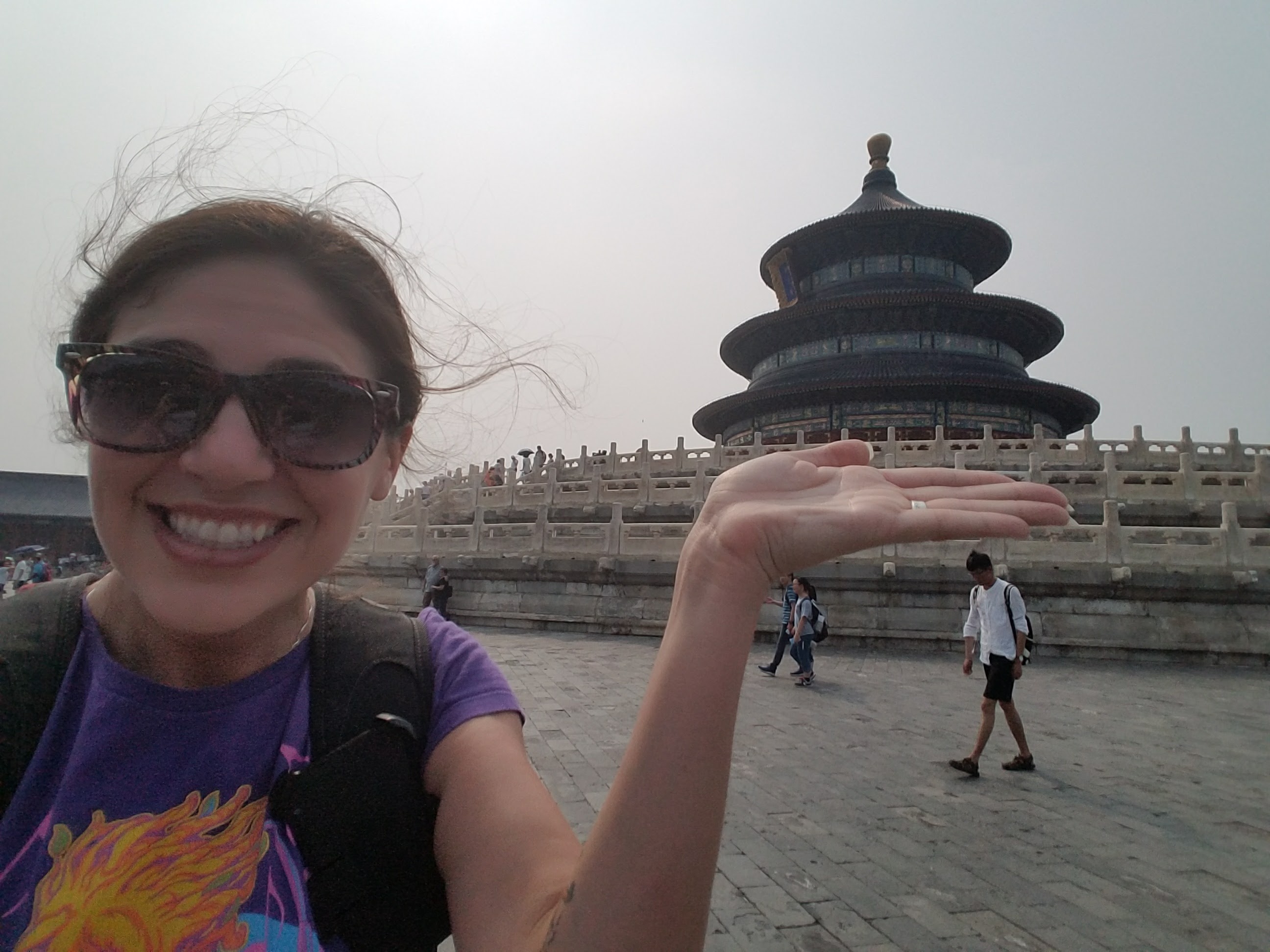 Like any country I will be visiting, there are a lot of things that are done differently in China. I noticed that they have recycling signs, similar to ones I see in the USA, but they have a different sign for trash. Instead of a person throwing something in the garbage, the recycling sign is inverted (the arrows point away) which is the landfill sign. I also noticed that there are a lot of trash collectors in China, and they use their hands to separate the waste. Since there are a lot of people in China, they obviously create a lot of waste, and the trash collectors make sure that everything goes to the right place.
Like any country I will be visiting, there are a lot of things that are done differently in China. I noticed that they have recycling signs, similar to ones I see in the USA, but they have a different sign for trash. Instead of a person throwing something in the garbage, the recycling sign is inverted (the arrows point away) which is the landfill sign. I also noticed that there are a lot of trash collectors in China, and they use their hands to separate the waste. Since there are a lot of people in China, they obviously create a lot of waste, and the trash collectors make sure that everything goes to the right place.
I admire the way that China preserves and respects their history, culture, and their elders. I was able to visit the Great Wall, Tieneman Square, Forbidden City, and the Temple of Heaven while in Beijing. It was amazing to see so much preservation of Chinese culture and history in one place.
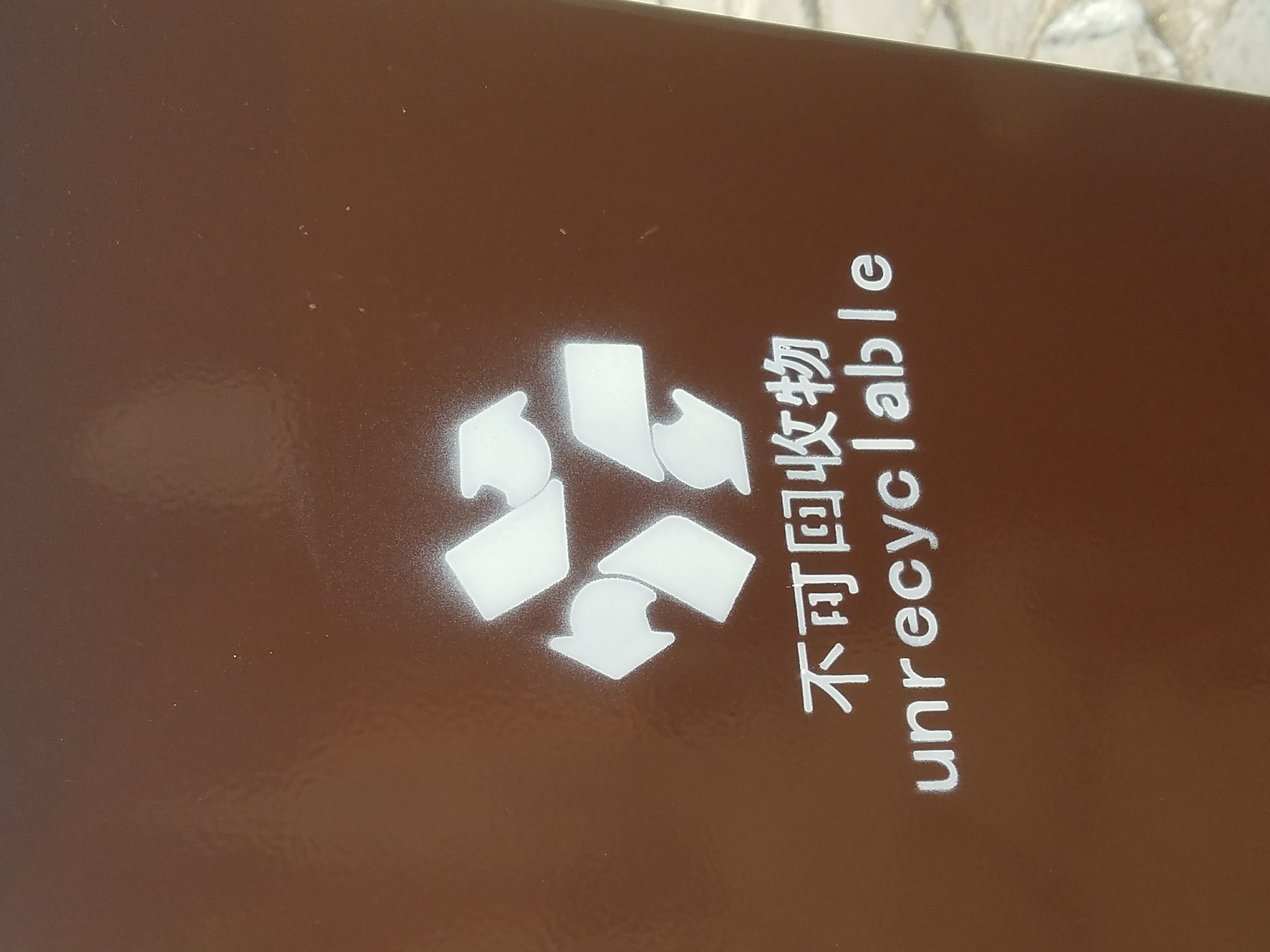 An aspect of life they do differently in China is how they eat. Being Italian, I am a huge fan of family-style, where everyone eats and shares the meal. In China, we sit at large round tables, with a large spinning plate in the middle (like a lazy Susan), and the platters of food go on the spinning plate, and everyone gets to take a little bit of everything. My favorite food (so far) is dumplings! There are different dumplings for breakfast, lunch, and dinner – and they’re all yummy!
An aspect of life they do differently in China is how they eat. Being Italian, I am a huge fan of family-style, where everyone eats and shares the meal. In China, we sit at large round tables, with a large spinning plate in the middle (like a lazy Susan), and the platters of food go on the spinning plate, and everyone gets to take a little bit of everything. My favorite food (so far) is dumplings! There are different dumplings for breakfast, lunch, and dinner – and they’re all yummy!
The food portions are not as large here – even the cereal boxes are smaller! And the food tastes different – I bought a Snickers at the corner store, and it was not as sweet or rich (or big) as one in that I would buy in America.
Even though I have only been here for a week, I have learned so much about their culture, the way they communicate, eat, their daily routines, etc. that it is hard to put everything into one vlog post. I am very happy I am here for almost 4 more weeks, so I can share more activities and lessons with you! Below you will find a list of some activities you can do with your students/child, as well as a lesson from my ‘Zero Waste’ English class.
If this lesson benefits you and your classroom in any way, I would really love to know! You can message me through the “Contact” section, and/or please fill out this 4 question survey.
Hands-on Activity Ideas:
- Using legos, blocks, sofa cushions, straws, newspaper, clay, any various materials, you can have your class (or child) create their own Great Wall of China! Each student can make part of the Great Wall, and you can put it together as a class. The cool thing is that the Great Wall is man-made, so the stairs, bricks, etc. is uneven at some points, so there is no perfection when you make it!
- Show students my video of my Great Wall Adventure for more information on how it looks (the Great Wall is pretty huge, and is made up of different materials at different points in the wall – I went to the part close to Beijing)
- For higher-level students, they can do a research project on the Great Wall of China – the history, when and how it was made, and why it was created.
- Have students try to pick up items using chopsticks! This is a fantastic activity to increase students neat pincer grasp (pencil grasp), as well as their fine motor and visual coordination skills. You can use food (fruits and healthy stuff is preferable!) or pom pom balls, pieces of string, anything! This is very difficult to do, so you might need to modify this activity, depending on their fine motor skills. You can buy modified chopsticks, wrap a rubber band around the two chopsticks, or use a clothespin.
- Students can work in teams to make a ‘fire mountain’ or a volcano. I did this activity with my English Language Learners, and not only is it a great activity, but it also fostered communication. We had vocabulary words like clay, vinegar, baking soda, and soap, and they worked together to put clay around a cup to make a volcano. Then they added vinegar, red food coloring, soap, and baking soda into their volcano, and got to watch it explode!
- Let students draw their own interpretation of China, or a specific aspect of Chinese culture. Since I went on a lot of adventures in a short amount of time, I decided to illustrate my adventure in a journal page. I do not really write in a journal – I write phrases sometimes, but I like to draw/color. After seeing my videos, and maybe doing their own research about China, they can draw and write about their own understanding of one or more Chinese customs.
- If you would like to do a unit about China, a whole-group activity you can do is a KWL chart – or list what they Know, Want to know, and (later) Learned about China.
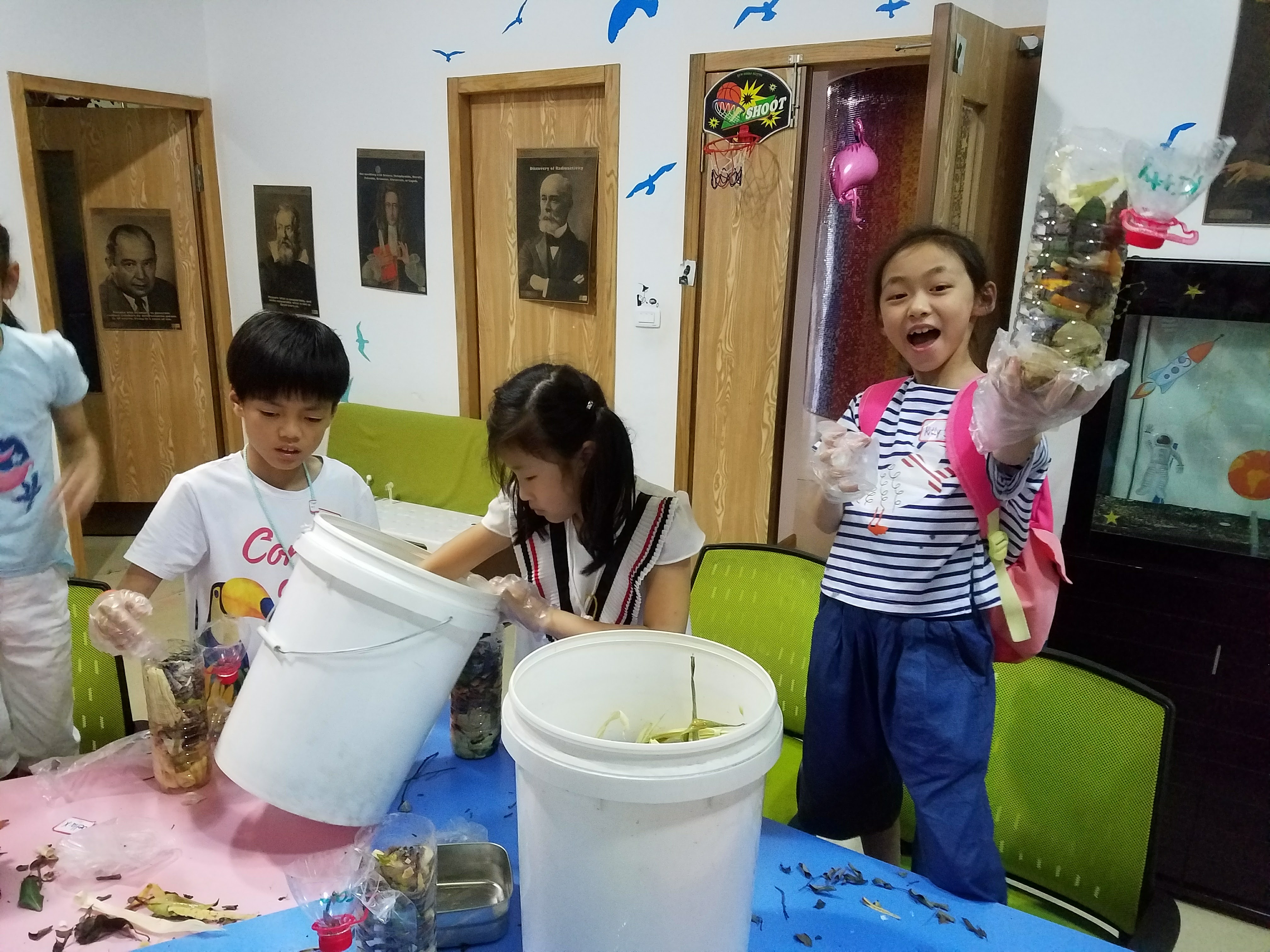 While teaching English in China, I am able to educate a small class about the 5 aspects of Zero Waste. This week, we discussed food waste and how we can compost our food instead of throw it out. Here in China, they are very conscious about not throwing anything, especially food, into the garbage. But there are still rinds, peels, and other biodegradable items that get tossed out. They also do not have a lot of access to clean water – filters are very expensive, so most people consume lots and lots of bottled water. This drives me crazy, because I just hate plastic, especially plastic bottles, so I have been collecting the plastic bottles we use at our school.
While teaching English in China, I am able to educate a small class about the 5 aspects of Zero Waste. This week, we discussed food waste and how we can compost our food instead of throw it out. Here in China, they are very conscious about not throwing anything, especially food, into the garbage. But there are still rinds, peels, and other biodegradable items that get tossed out. They also do not have a lot of access to clean water – filters are very expensive, so most people consume lots and lots of bottled water. This drives me crazy, because I just hate plastic, especially plastic bottles, so I have been collecting the plastic bottles we use at our school.
This week, I also had our school cafeteria save the food waste, and as a science experiment, my Zero Waste class created compost in a plastic bottle. We will be observing how the food, paper, and leaves break down over time, but we did a writing lesson, where we drew what was in our bottles and what we think would happen.
Lesson: What is compost?
Objective: You will identify, and then write and draw what can and cannot be put into compost.
Vocabulary words: Rot, compost, decompose, biodegradable, hypothesis
Essential Questions:
- What do you know about compost?
- What does ‘biodegradable’ mean?
- Should you waste food?
Possible books: Compost Stew: An A to Z Recipe for the Earth by Mary McKenna Siddals, Plants Feed Me by Lizzy Rockwell, Wonderful Worms by Linda Glasser
You can also check out this article to find more composting books!
Materials:
- Large poster paper
- Writing journal/sheet of paper
- Colored pencils/markers/crayons
- Plastic bottle
- Plastic (or reusable) gloves
- Compostable/not compostable food waste (in a bucket, or receptacle of some sort)
- Access to leaves/paper/soil
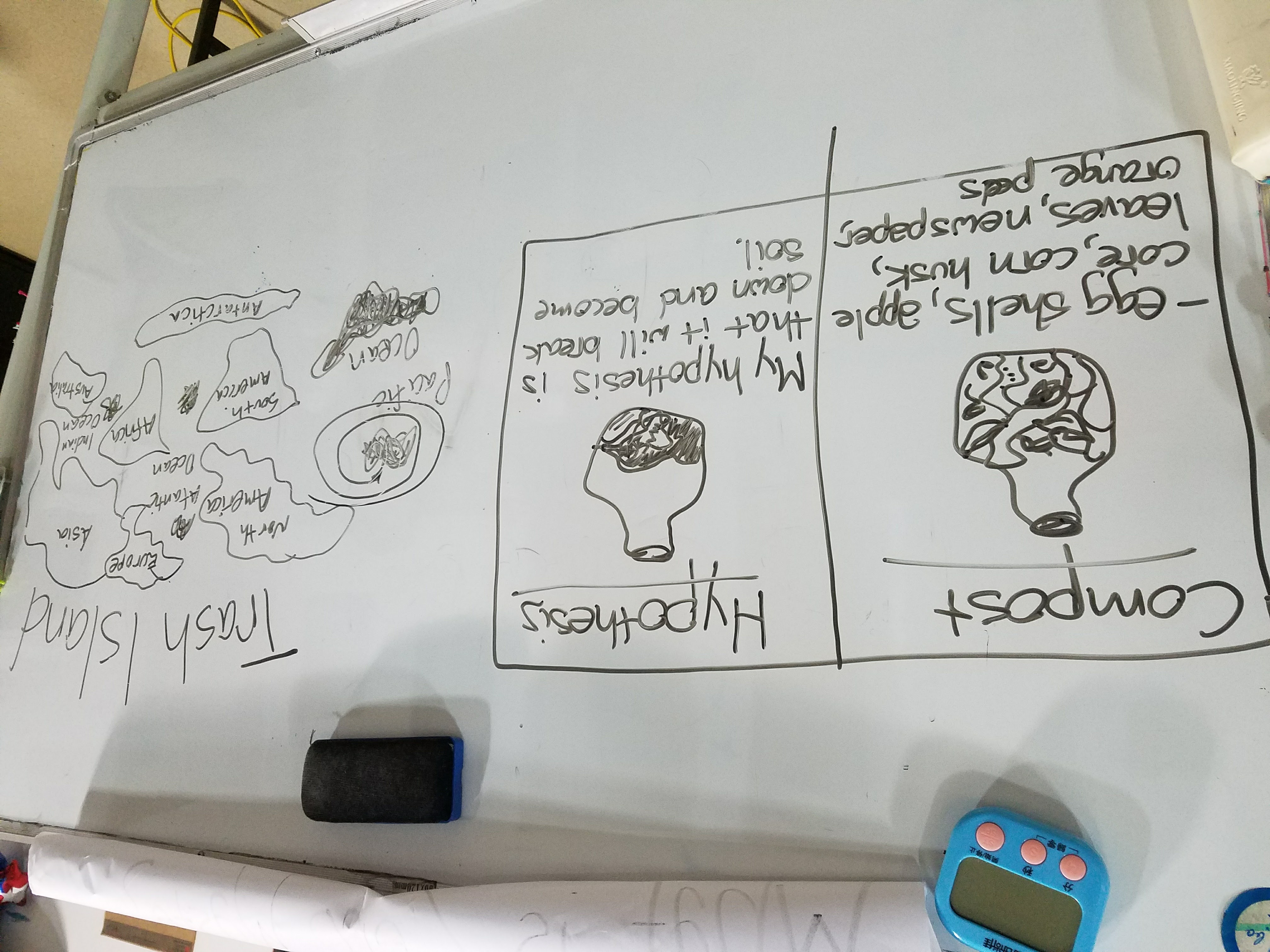
Procedure: After a discussion of their understanding of what ‘waste’ is and what ‘food waste’ entails, identify that some food garbage can be composted.
“Did you know that half of the fruits and vegetables that are grown in America get thrown away? That is about 60 million tons of food, or $160 billion worth of produce. For one family of four, that is about $1,600 of discarded produce – and that isn’t even other food, like pasta, meat, and packaged foods.
So what can we do about all that food that gets thrown away? When food waste is in a landfill with other non-biodegradable items, it naturally creates a gas called methane, which is very harmful to the planet. Now we know that there are 5 steps of Zero Waste – refuse, or say “no thank you,” reduce, or use less, reuse, or use again, recycle, or make again, and rot, or compost. Since we are talking about food waste, we will be learning about the Zero Waste step of ‘rot’ which is also known as compost.
Compost includes anything that is biodegradable – basically, what came from the ground can go back into the ground. When items like fruits, paper, and leaves are mixed together, they decompose, or break down, and become soil! Isn’t that cool?
What we will do today is create our own compost bottles using a plastic bottle and this food waste. We will also go outside and collect some leaves and soil to add to our bottle. I want you to create layers of paper, biodegradable food, and leaves, all the way to the top of your plastic bottle. We are going to see what happens to our compost bottles over time, but today you are going to make a list of everything that you put into your compost – egg shells, watermelon rinds, orange peels, leaves, newspaper, apple cores, etc. Then, on the other side of your paper, you will draw and write your hypothesis – what do you think will happen to your compost bottle in one month?
Think about our vocabulary words – rot, decompose, biodegradable – and apply them to your hypothesis. What do you think will break down? Do you think some items in your compost will break down faster than others? What do you think it will look like, and smell like?”
After students have completed this activity, have them share with the class what they drew and wrote.


